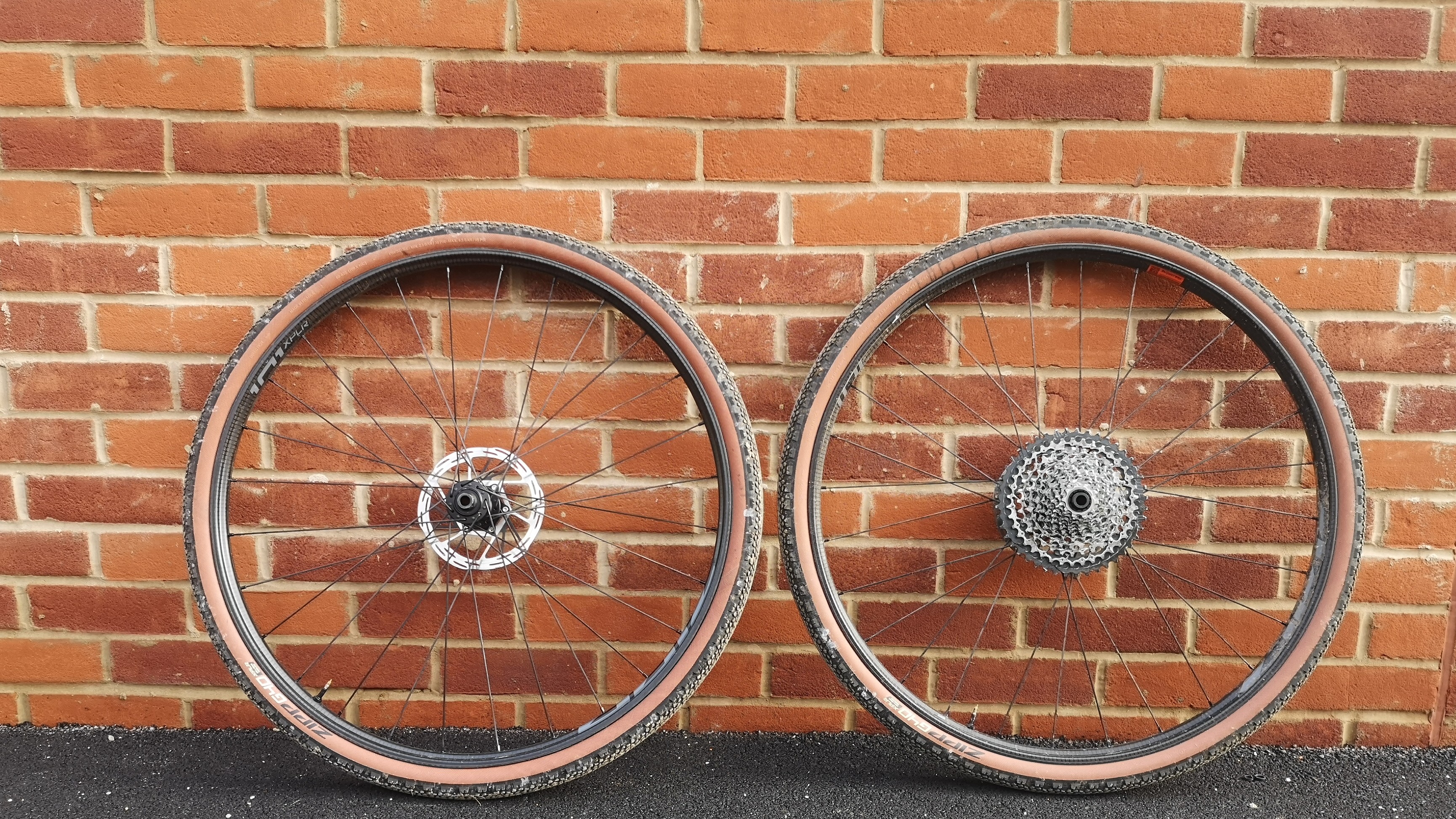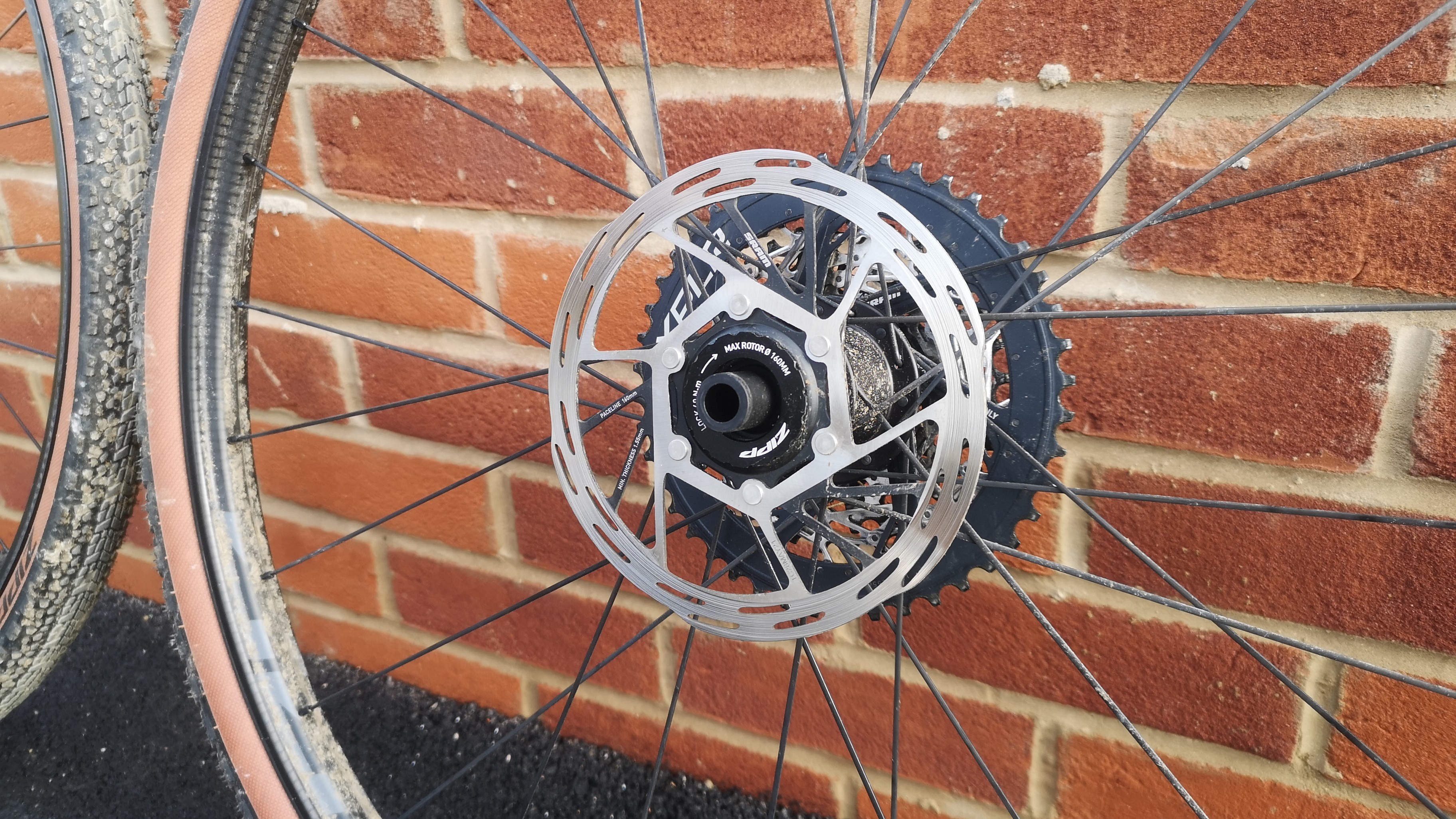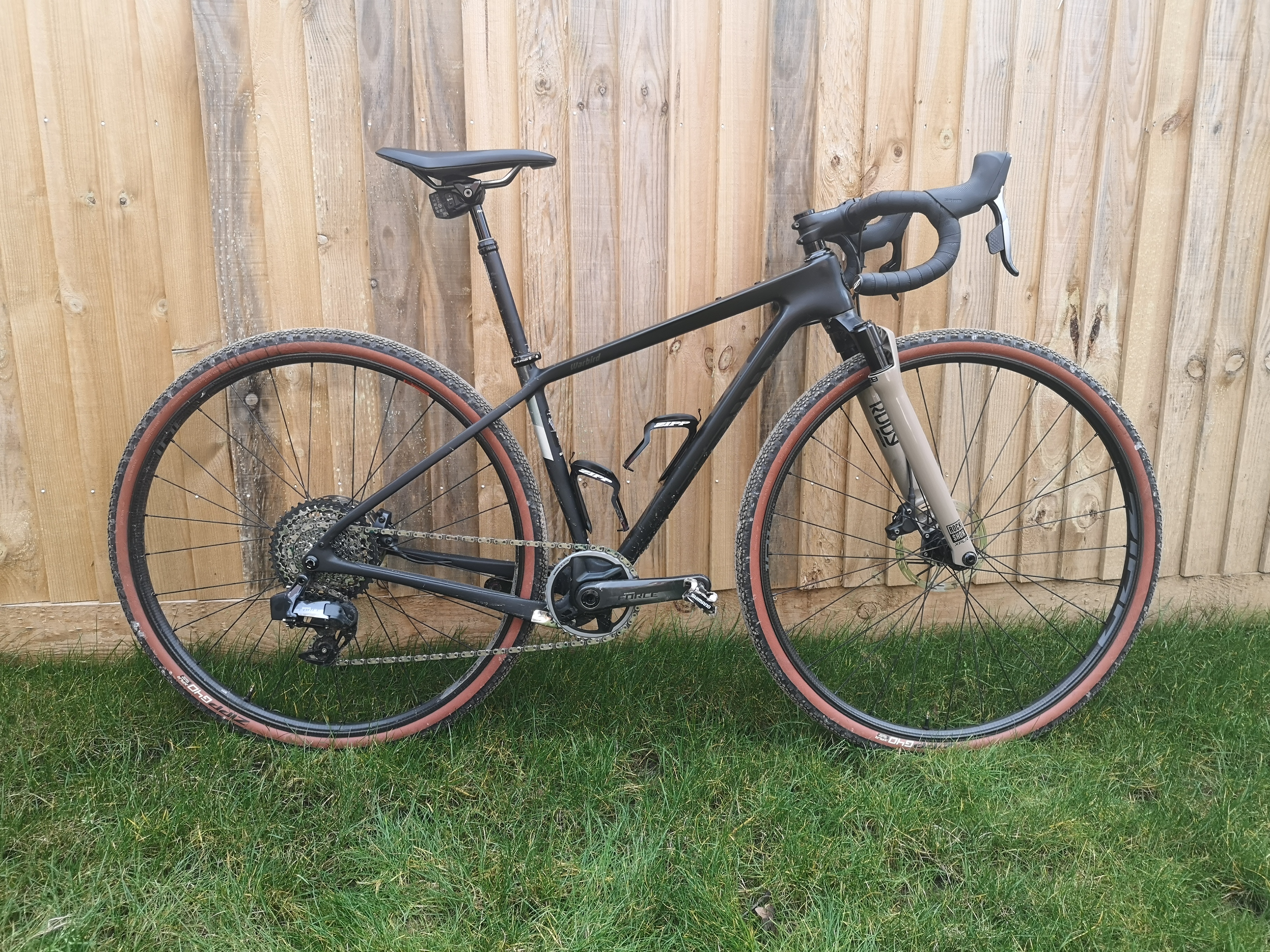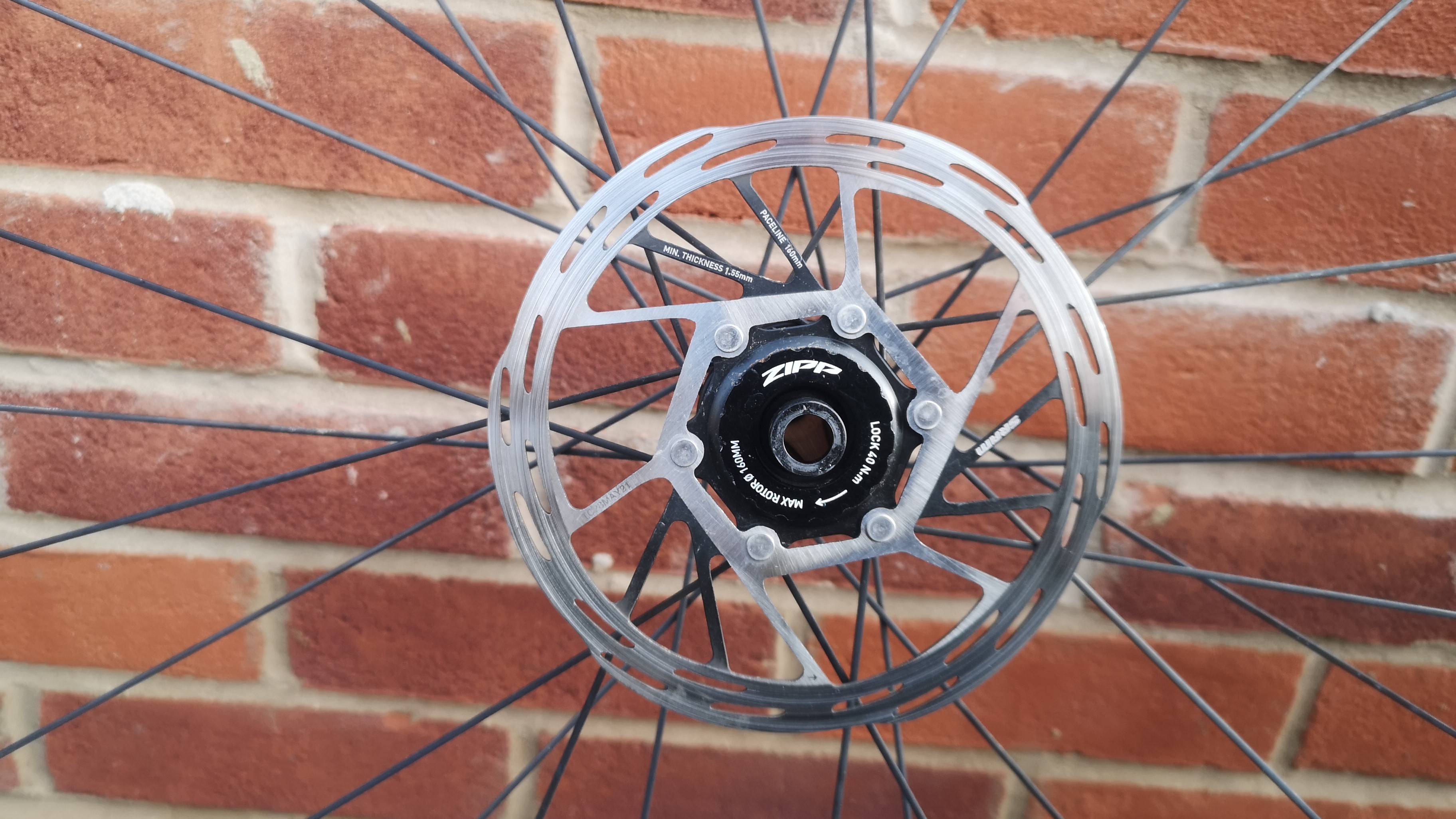Zipp 101 XPLR gravel wheelset review
A gravel wheelset designed for riders seeking more gnar than far

Zipp's 101 XPLR wheelset is one of few options on the market for riders tackling more technical terrain, and prioritising control over weight and aerodynamics. For a tester used to carbon rims of around 45mm, where the differences are often more nuanced, it was a joy to hop onto a set of hoops that provided a discernibly different ride quality. The target audience is a fairly narrow but demanding demographic, but if you want a bombproof set of gravel wheels for traversing rocks and roots, these are a good bet.
-
+
Confidence-inspiring control
-
+
Gravel needs more bombproof options
-
+
Tech has passed the test of time in the MTB world
-
-
Single-use focus
-
-
Heavy vs competition
You can trust Cycling Weekly.

Everything ‘gravel’ product-related comes with a very major caveat: the definition of gravel varies significantly from country to country, region to region, and rider to rider. For some, ‘gravel’ is about gravel racing, going hard and fast on paths strewn with worn-down flint. For others, it means natural rock gardens, and for a lot of UK riders, it means mud.
For those chasing speed across relatively untechnical gravel, a wheel with a robust but aero rim is going to be the name of the game; that’s not the Zipp 101 XPLR. Pinching the title from Zipp’s previous 101 - an aluminium, shallow section rim - the new iteration is an intentionally flexy construction created to meet the needs of those who like their gravel with a side order of gnar.
Zipp 101 XPLR gravel wheelset: construction

The new Zipp 101 XPLR wheelset was launched as part of the SRAM/Rockshox/Zipp XPLR collection. I scored the RockShox Rudy XPLR suspension 3.5/5 and the RockShox Reverb XPLR seatpost 3/5. In my book, both were 'nice to have', but somewhat surplus to requirement. Of the collection, the Zipp 101 XPLR wheels feel like the best investment.
The Zipp 101 XPLR sees the brand look to incorporate the technology it uses on its enduro/trail wheelsets - initially via the 3Zero MOTO MTB wheels - which itself is copied from motorsport.
Effectively, the single-wall carbon rim intentionally flexes. The idea is to provide greater control and grip in the corners. I’ll have to borrow Zipp’s analogy since I’ve not been creative enough to come up with a better one: imagine a runner rounding a sharp bend, their ankle pivots to allow them to turn, and these wheels target the same response.
Flex - which we tend to avoid in situations where we expect to be putting the power down - is used here to create the feeling of additional suspension, also allowing the rim to be more resistant to dings, and therefore letting the rider run lower pressure.
Zipp continues to use what it calls 'ankle compliance' tech in its off-road wheels, so we can draw the conclusion that it's not been a short-term fad, hidden away after a few years. Arguably, though the 40mm tyres I tested the set-up with will muffle some of the effects, the flex is going to be far more discernible on a gravel bike than it will a full-sus mountain bike.
In keeping with gravel trends, these come in 650b and 700c sizes. Weight has not been a focus - claimed weights are 1,590g and 1,665g respectively. We got 1,680g for the 700c pair (with tape and valves). Asked what it was about the construction method that made for a heavier rim when compared with Zipp's other gravel-ready carbon offerings, the brand said: "If we used the same amount of material to make a box section rim to make the single wall rim, we would not have the strength or the stiffness required. So we need a thicker layer of material."
Whilst many ‘gravel’ wheelsets are really ‘all road’ options (see: Zipp’s own 303 Firecrest), these hoops are specific to their purpose: the aim is stamped clearly by the 27mm internal rim width. Don’t be running these with road tyres. The Zipp G40 tyre fitted to these, at 25psi, measured 41.8mm on my digital Verniers.
The rims are hookless too, and off-road this makes absolute perfect sense, there is no chance you’ll want to exceed the maximum suggested pressure. The intention is that you run these tubeless, but you can add a tube provided the tyre is hookless compatible.
Zipp has used its ZR1 hubset, utilising steel cartridge bearings and a six-pawl leaf spring driver mechanism, with 66 points of engagement and a 5.45-degree maximum pick-up lag. This makes for quicker pick-up responses than you'd expect in a road wheel. Even the extremely expensive Zipp 353 NSW road wheel comes with 'only' 54 points of engagement, and that was a marked increase from its prior 36.
The spokes are CX-Sprint, with 28 laced in a 3-cross pattern, the intention here is durability, and these should be easy to source, replace and true.
Zipp 101 XPLR gravel wheelset: the ride

I tested the Zipp 101 XPLR wheels aboard a Salsa Warbird gravel bike, which had previously been furnished with the brand’s 303 Firecrest wheels. Whilst both from the Zipp family, this provided a pretty solid base for comparing the wheels alone, with the 303 Firecrest hoops designed to meet the demands of 'all road' riders, who still want a lightweight rim and an aero profile.
Did I feel the difference? Honestly, yes. Hilariously, riding the Zipp 101s was the first time I ‘got air’ on this set-up (I use the quotation marks because I'm neither 'rad' nor 'epic' enough to use the term without them), whilst hurtling down a fast descent. Strava stats prove I really was just pushing the pace harder than previously, and whilst I can't grade confidence numerically, I did feel a boost on this setup, which for want of a better term was reminiscent of a well-equipped but relatively nimble tractor.
After a few test rides, I found myself hitting off-camber roots with more speed than I would have previously, confident in the assurance that my set-up would handle the terrain without me having to make so many adjustments. The tyres, stretched out by the internal rim measurement, will have contributed here. But the experience mirrors what physics tells us: more flex at the wheel reduces the need for the rider to divert from their course or take evasive action.
As a relative newcomer to off-road terrain, the Zip 101s provided me with a tangible confidence uplift; a rider with more tekkerz on the trails would have got more performance out of these than I could.
Resilience is harder to test. I used the 303 Firecrest wheels to cover 100 miles of South Downs Way gravel, including descents strewn with menacingly large rocks - and I didn’t come a cropper. However, such incidents take time, and these wheels were replaced by the Zipp 101s after a few months. The extra flex afforded by these wheels should make for greater resilience, but I cannot claim to have experienced this during the test period.
These aren’t particularly light wheels, at 1,6804g vs 1,410g, so they will add to the overall weight (vs a lightweight carbon pair with weight as a focus), and that has its penalties in acceleration. However, if your focus is more scrambling up techy ascents, then that extra pivot is going to provide you with more assistance than losing 200g.
Zipp 101 XPLR gravel wheelset: value and conclusions

At £1,646/$1,800 a pair, this is an outlay that sits in line with the likes of the Zipp 303 Firecrest, but comes well in excess of the ‘all road’ Ronde from Parcours which impressed us so much (£1,049 with steel bearings).
The RRP to weight ratio is not an area where Zipp can purport to shine with the 101 XPLR. The Scribe Gravel Wide++ wheels weighed 1,306g (with tape but without valves) and at a price of £870 / $1,000.00. Parcours’ Alta gravel wheels were £849 / $1,149 and weigh a claimed 1,460g in the 700c version. Being the first wheelset of its kind in the gravel genre, perhaps we'll see Zipp snip away at the weight over future iterations - but it's never going to be first and foremost.
Don't buy these if you value low weight, or if you're keen for an all-rounder of an aero boost. If you, very specifically, want a gravel wheelset that focuses on traction, grip, confidence on techy terrain and bombproof rims, these are a good bet.
- RRP: £1,646/$1,800 a pair
- Weight: 1,680g (with valves and tape)
FAQs
What is a gravel wheelset?
A gravel wheelset is one that’s designed for the rigours of drop-bar, off-road riding. Typically, they will have a sturdier construction than a typical set of road wheels, with more spokes, better sealing of the bearings and a wider internal rim width to better support the wider tyres.
With the slower speeds of gravel riding, aerodynamics and deep section wheels aren’t so important, so typically gravel wheels are much shallower.
Are gravel wheels different to road wheels?
There’s quite a number of differences between gravel and road wheels, although some of them can be quite subtle. The main difference is that the internal rim width of gravel wheels tends to be a lot wider, so as to better support wider tyres.
Gravel wheels also tend to be built a bit more robustly, with a higher spoke count, heavier materials, and better sealed bearings, so as to withstand the harsher conditions of going off road. This does mean gravel wheels don’t tend to be quite as zippy as road wheels of a similar price.
Can I use road wheels on gravel?
Gravel consists of quite a wide spectrum. On smoother gravel trails, using a road wheel will be completely fine. The narrow internal rim widths of road wheel are still compatible with narrower gravel tyres, such as those under 40mm, while the strength of the wheel will be more than sufficient. Unless you’re talking about the very lightest of road wheels.
On rockier and rougher terrain, you’ll want a dedicated gravel wheelset. One which is built specifically to handle harsher conditions and that has a wider internal rim width to better support the sidewalls of wider tyres.
How do you choose gravel wheels?
There is a range of factors when choosing gravel wheels. Consider the type of terrain you’re planning on riding, do you need a more strongly built wheel with a wider internal rim width for wider tyres?
Budget is another large determinant. Carbon makes for a lighter wheel, but it is much more expensive – particularly if you damage your wheels in a crash. Aluminium makes a much more economical option, even if it is heavier.

Thank you for reading 20 articles this month* Join now for unlimited access
Enjoy your first month for just £1 / $1 / €1
*Read 5 free articles per month without a subscription

Join now for unlimited access
Try first month for just £1 / $1 / €1
Get The Leadout Newsletter
The latest race content, interviews, features, reviews and expert buying guides, direct to your inbox!
Michelle Arthurs-Brennan the Editor of Cycling Weekly website. An NCTJ qualified traditional journalist by trade, Michelle began her career working for local newspapers. She's worked within the cycling industry since 2012, and joined the Cycling Weekly team in 2017, having previously been Editor at Total Women's Cycling. Prior to welcoming her first daughter in 2022, Michelle raced on the road, track, and in time trials, and still rides as much as she can - albeit a fair proportion indoors, for now.
Michelle is on maternity leave from April 2025 until spring 2026.
-
 'This is the marriage venue, no?': how one rider ran the whole gamut of hallucinations in a single race
'This is the marriage venue, no?': how one rider ran the whole gamut of hallucinations in a single raceKabir Rachure's first RAAM was a crazy experience in more ways than one, he tells Cycling Weekly's Going Long podcast
By James Shrubsall Published
-
 Full Tour of Britain Women route announced, taking place from North Yorkshire to Glasgow
Full Tour of Britain Women route announced, taking place from North Yorkshire to GlasgowBritish Cycling's Women's WorldTour four-stage race will take place in northern England and Scotland
By Tom Thewlis Published
-
 Positive signs for UK bike industry as Halfords cycling sales grow
Positive signs for UK bike industry as Halfords cycling sales growRetailer admits that the impact of Donald Trump's tariffs remains to be seen
By Tom Thewlis Published